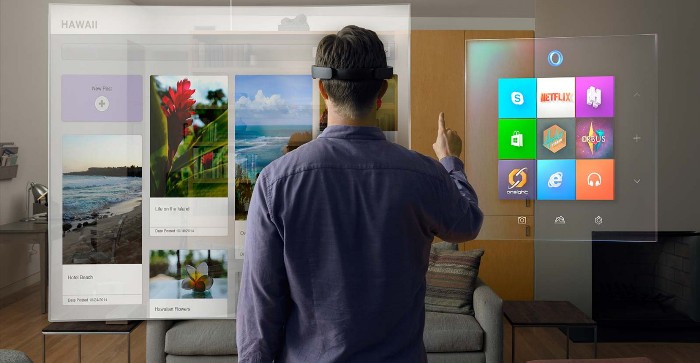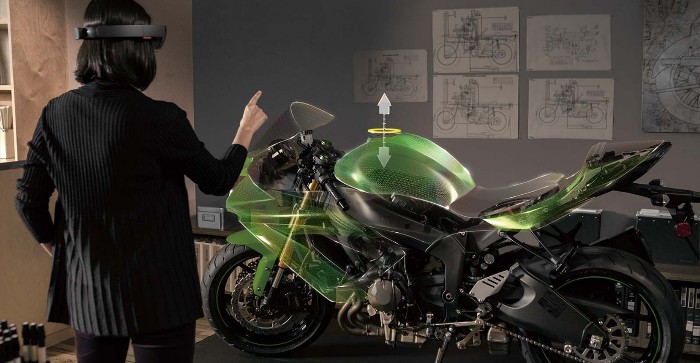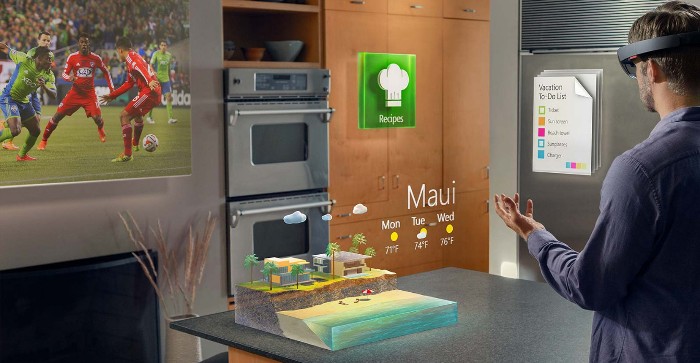Microsoft HoloLens: Exciting but still Not the Hologram You Are Likely Expecting
Microsoft finally responds to the wearable and virtual reality trend. This time, the software giant giving it a fancy name — albeit a misnomer. Presented during the Windows 10 live event, Microsoft’s Alex Kipman presented Microsoft’s apparent response to Google Glass and the various virtual reality headsets from different companies: the Microsoft HoloLens.
Microsoft HoloLens, just like Google Glass, is a combination of software and hardware that is wearable and loaded with advanced virtual reality tech. It is an untethered system (unlike Sony’s smart glasses) that comes with its own operating system and an extensive range of sensors that enable lifelike interactions with the virtual objects projected on the glasses. It’s like a combination of Google Glass and Oculus Rift backed by robust software developed by some of the best software engineers in Microsoft’s stable.
The following are some of the highlights and most interesting features of this new technology from Microsoft:
- It’s still not the hologram technology defined in dictionaries and depicted in science fiction movies.
As mentioned, the “holo” part of this tech’s name (and the advertising/presentation) is still not quite like the hologram everyone would expect. HoloLens is still mostly a virtual reality technology. However, it does create a “holographic experience” is it enables interaction with virtual things through transparent glasses. There are no actual holograms projected. The “holograms” are only visible to the person wearing the HoloLens headset. However, if other people are wearing the HoloLens, once properly configured, they can see and interact with the “holograms” visible to other HoloLens wearers.
Well, this technology is not necessarily disappointing though. After all, implementing holograms for the kind virtual interactions HoloLens is built for isn’t really practical at this point in technology. It would just have been slightly better though if Microsoft refused to indulge in the misnomer.
- HoloLens enables the creation of virtual objects (“holograms”) that can be quickly 3D-printed into real objects.
In the live event for the Hololens presented by Kipman, an assistant created a 3D “hologram” model of a quadcopter on the spot. The finished 3D model was then shown to have been converted into a real object through 3D printing.
- Interaction with the HoloLens is through the eyes, hands (fingers mostly), and voice.
To create a truly immersive virtual reality experience that simulates real-world interactions, the HoloLens can be used with a combination of interactions that may involve (virtual) touch or gestures, eye focusing (the system knows what you’re looking at), and sound. Interaction through sound means that you can actually talk to the system similar to how it works with Google Glass.
- Virtual reality or augmented reality? Which is which?
For the sake of clarification and simplification, let’s put things this way: virtual reality is to Oculus Rift while augmented reality is to Google Glass (and other similar devices). Basically, in virtual reality systems, the wearer of the VR device loses sight of the surroundings as everything is replaced by a virtual world. In augmented reality, on the other hand, the real surroundings can still be visible since virtual objects are projected to the special glasses and are visible along with the sights of the real world. HoloLens can be both. As implied in the live demonstration, HoloLens creates “holographic” experiences but it can also be used for exploring virtual worlds or simulations of real worlds in 360° view, like checking out the Martian world or inspecting a vehicle from across various vantage points. Hence, it’s can be both a VR and AR system.
Well, it can actually be argued that augmented reality devices like Google Glass can be used as virtual reality systems by making the surrounding imagery “disappear” through the removal of surrounding lighting (or getting inside a completely dark room) or through the use of unicolored walls and chroma effect. However, virtual reality systems are not easily converted into augmented reality systems since they block the sight of the surroundings.
- MIcrosoft wants developers to use the Windows platform for developing augmented reality apps — through Windows Holographic.
Alongside the presentation of HoloLens is the announcement of Windows Holographic, Microsoft’s augmented reality computing platform that will be released this year. Microsoft will be providing Windows Holographic APIs that are already enabled in all versions of Windows 10 (including Windows 10 for mobile devices). With these APIs, augmented reality features can already be easily implemented on an app for Windows 10, across all devices that support the operating system.
HoloLens is a promising development in the world of virtual/augmented reality software and hardware. There have been no immersive actual demonstrations of the technology yet so it’s too early to say if it is really as impressive as what Kipman excitedly demonstrated. It is touted as the next “PC phenomenon” as it is expected (hoped for) to create experiences that are new and impressive. It’s supposedly comparable to the feeling of drawing with Paint for the first time, when personal computers were new.


